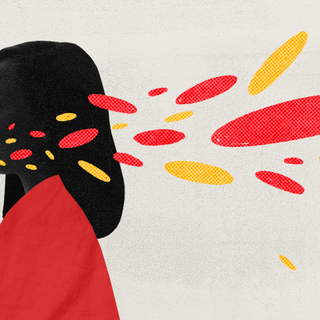The Maharashtra government recently included a mold of the penis in their family planning counseling kits to make the demonstrations more “effective.” But Accredited Social Health Activists (ASHAs) — women responsible for raising awareness around family sexual health and fertility in rural areas — are facing resistance from community members owing to the graphic models.
“Through the tools, the ASHAs can also demonstrate the process of wearing condoms,” said Dr. Archana Patil, head of the Directorate of Health Service. So far, the women were using pictures in pamphlets and booklets. This is the first time practical tools — like a replica of a uterus and mold of a phallus — have been included.
The motivation for the decision is evident: experts think practical representation will raise awareness and make the demonstration more effective. Arguably, a visual demonstration of how to use condoms or the detailed anatomy is instructive and may even encourage people to use condoms. But any family planning intervention sits within a socio-cultural context; in this case, the context is replete with social taboos around sex and reproductive health.
ASHAs, as India’s frontline rural healthcare workers, are primarily responsible for maintaining community-based contacts, distributing contraception, and counseling couples on family planning. Family planning remains the most immediate community-level intervention to reduce pregnancy-related mortality in India, experts note. Their comfort and training with regard to using sex equipment then become the fulcrum of the conversation.
Notably, there are ideological and systemic barriers to this implementation. For one, there remains a widespread stigma around sex education or conversation about sex of any kind; the specter of a rubber penis being used to talk about family planning then ruffles cultural features.
“Earlier, we used to counsel couples with pictures. But now, as soon as we take out the mold, the family members, especially the men, take offense because of stigmatization. They claim that we are shameless and corrupting their wives,” an ASHA from Nashik told the Indian Express.
Related on The Swaddle:
Take Note of ASHA Workers’ “Poor Working Conditions,” Human Rights Body Tells Govt
Then, some experts also note that ASHAs may not be fully trained to disperse sex education or raise awareness about family planning using these tools. Their own discomfort, coupled with the insults and harassment they face by community members, may make the whole endeavor futile.
“Most of the ASHAs are have studied till Class X and aren’t qualified to properly disperse of sex education with the tools,” said Raju Desale, Maharashtra Rajy Aarogy Khate ASHA V Gat Pravartak Sanghtana. “Any improper discussion can further create confusion among couples and insult the manhood of men.”
Moreover, ASHAs have faced discrimination and harassment — by virtue of their gender and unsalaried worker status. “ASHAs are structurally vulnerable to intimidation because they are perceived to have low status – they are female, at the base of the hierarchical health system, often not rich, not formally employed by the health establishment, and are not salaried workers,” said public health advocate Anant Bhan. This pattern of exclusion was reinforced during the pandemic — when several women reported facing violence and were ostracized from their communities for their link to Covid19. Indubitably, having to use sex equipment models for local rural awareness may mean greater difficulties for the women.
The question is not if visual models of reproductive organs make family planning schemes more effective; but how these channels of instruction canbe seamlessly incorporated within intervention programs. The answer lies somewhere between addressing the reluctance of ASHAs, as well as structurally dismantling the stereotypes around sex and reproduction.




